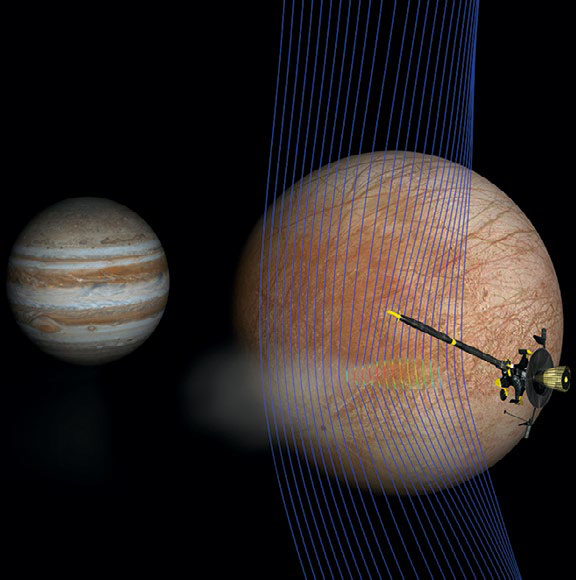Scientists looked back in time to offer new evidence suggesting that plumes of water vapour shoot out into space from Jupiter’s moon Europa. In this new study researchers used observations made by the Galileo spacecraft to simulate the movement of positively charged subatomic particles called protons near the moon. While flying by the icy world in 2000, Galileo found fewer protons around Europa than researchers expected. They chalked this up to issues with the probe’s instrument.

Galileo data is still revealing exciting new things about Jupiter and its moons
© NASA/JPL-Caltech
The team found that some of these ‘missing protons’ weren’t registered because a water plume shooting out from the moon blocked them from the instrument. A different instrument on Galileo conducted magnetic field studies of the moon, and the researchers were able to show a disruption in nearby magnetic fields when the plume shot out to support their theory. The ESA aims to probe this world closer with its highly anticipated Jupiter Icy Moons Explorer in 2022, while NASA will be launching the Europa Clipper spacecraft in 2024.